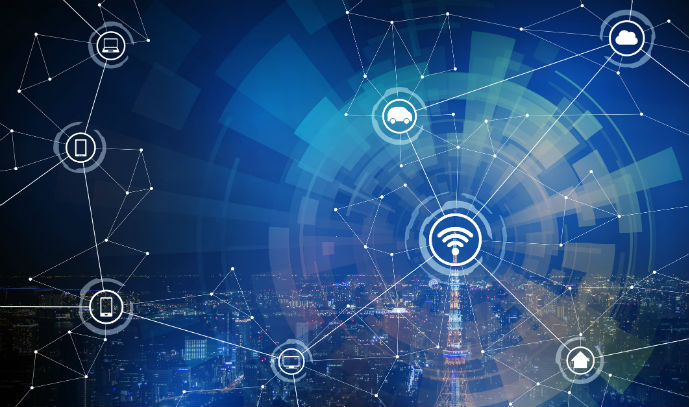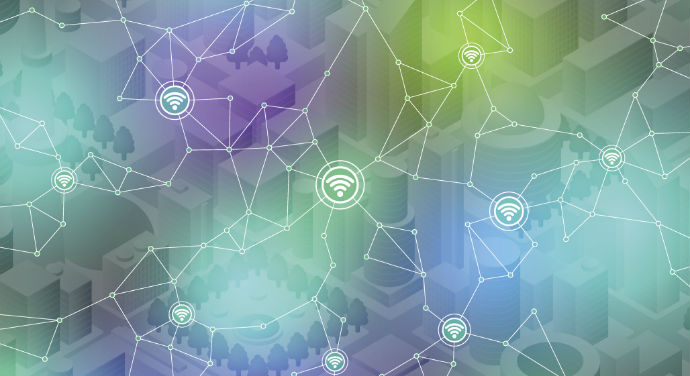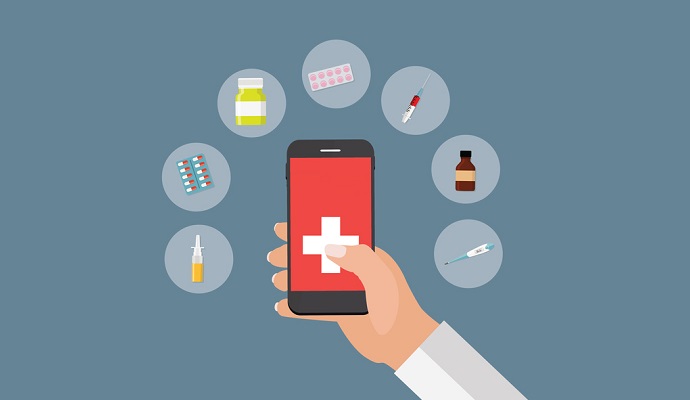Wi-Fi 6, 5G Could Be Turning Point for Health IT Infrastructure
Next-generation wireless networking technologies could be the solution to the proliferation of medical and mobile devices, which is threatening to overwhelm health IT infrastructure.

Source: Thinkstock
- Healthcare organizations are deploying more bandwidth-intensive connected medical devices and mobile devices, which are straining existing health IT infrastructure.
Next-generation wireless networking technologies, such as Wi-Fi 6 and 5G cellular, could be the solution to this growing problem.
To ease network congestion, the Wi-Fi 6 wireless networking standard is expected to provide higher data rates, increased capacity, strong performance with many connected devices, and improved power efficiency compared with previous Wi-Fi versions.
Meanwhile, the 5G cellular standard promises much higher speeds and lower latency than 4G and previous cellular versions, which will not only help with medical and mobile device use in hospitals but also with telemedicine and remote care.
Yet, the next generation of wireless technologies has certain issues that organizations need to consider. Upgrading to Wi-Fi 6 will involve significant investment in infrastructure and equipment, while deployment of 5G networks is just starting and won’t be widely available for years.
Healthcare organizations should plan to tap into the network advantages offered by these wireless technologies, but they should do so in a coordinated way that leverages the strengths of both these innovative strategies.
Wireless Medical Device Proliferation Could Overwhelm Networks
5G Wireless Advancements Support Future Network Connectivity

Source: Thinkstock
What changes will Wi-Fi 6 bring?
The next-generation Wi-Fi 6 wireless networking standard could be a huge improvement for healthcare organizations operating many bandwidth-intensive connected devices.
In particular, Wi-Fi 6 offers:
- Uplink and downlink orthogonal frequency division multiple access (OFDMA), which increases network efficiency and lowers latency for high-demand environments, such as hospitals
- Multi-user multiple input multiple output (MU-MIMO), which allows more data to be transferred at the same time and enables an access point to transmit to a larger number of concurrent clients
- Transmit beamforming, which enables higher data rates at a given range resulting in greater network capacity
- 1024 quadrature amplitude modulation mode (1024-QAM), which increases throughput in Wi-Fi devices by encoding more data in the same amount of spectrum
- Target wake time, which improves battery life in Wi-Fi devices, such as Internet of Things devices
As part of the upgrade to Wi-Fi 6, the Wi-Fi Alliance adopted a new naming convention for Wi-Fi versions. Instead of having to remember 802.11ac, Wi-Fi users just need to remember Wi-Fi 5. For 802.11n, the designation is Wi-Fi 4. And Wi-Fi 6 is based on the next-generation 802.11ax technology.
Wi-Fi 6 incorporates OFDMA, which increases network efficiency and lowers latency for high-demand networking environments.
With OFDMA, up to 30 devices can share a channel, rather than taking turns sending data. Wi-Fi 6-enabled wireless medical devices will work better, stay connected, and be more reliable, proponents say.
“From our perspective, Wi-Fi 6 is a fundamental change in the Wi-Fi ecosystem, because what we're doing is we're moving from OFDM to OFDMA, which means that there’s some significant changes that are happening in this round,” said Matt MacPherson, chief technology officer for wireless at Cisco.
OFDMA is a multi-user version of OFDM, which is a method of encoding digital data on multiple carrier frequencies. In an OFDM system, the user or device is allocated on the time domain only, while in an OFDMA system the user or device is allocated on both time and frequency.
“With Wi-Fi, each device has a transmit opportunity, and it can send so much traffic in that transmit opportunity. Typically what it does is it sends a single stream of data,” MacPherson told HITInfrastructure.com.
“In OFDMA, you can actually schedule in the frequency domain. This is new. What that means is that when you have a transmit opportunity, you can put multiple different streams of traffic into that transmit opportunity, so you're fully using it.”
MacPherson described a scenario where doctors and nurses are using paging systems at the same time as Internet of Things devices, like heart monitors, are sending data. Wi-Fi 6 would give the organization the ability to prioritize that traffic so that the most important data is transmitted first.
“Wi-Fi 6 allows organizations to connect a lot more devices with much more consistent throughput. So not only is the individual throughput per device better, but also it’s consistent across the network. Then as you add devices, that throughput will remain consistent, and it won't start to drop off,” he explained.
Hospitals are an example of a congested, high-traffic environment that would benefit from other Wi-Fi 6 features, such as MU-MIMO, which enables an access point to transmit to a larger number of concurrent clients.
“The 8x8 MU-MIMO is going to be critical because that improves your overall spectral efficiency, being able to service eight clients at a time both on the uplink and downlink side,” said Jay White, product manager of Wi-Fi products for Laird Connectivity.
Wi-Fi-enabled medical devices like infusion pumps can take advantage of scheduling-based resource allocation. Along with other devices and access points, the infusion pump can negotiate and define a specific time to send data.
“You also have things like target wake time. This will help with low-power medical devices that aren't in use 100 percent of the time. If they are running on a battery, they can stay asleep for longer durations of time and only wake up when it's critical for them to send data,” White told HITInfrastructure.com.
“The real benefit to Wi-Fi 6 is improving the network efficiency as a whole, so the entire network gets lifted up by using Wi-Fi 6,” White said.
Wi-Fi 6 Wireless Networking Standard Could Be Healthcare Game Changer
Wi-Fi CERTIFIED WPA3 Improves Healthcare Network Security

Source: Thinkstock
Impediments to upgrading to Wi-Fi 6
Wi-Fi 6 may offer strong technical advantages, but implementation might be delayed due to the cost of purchasing new hardware and the challenges of scheduling downtime in an organization that never takes a break.
“This will be a hardware change so folks that want to leverage Wi-Fi 6 will have to swap out their old network equipment, particularly the access points,” White related.
“The new access points are generally pretty expensive, especially when you start talking buying MIMO to really leverage the full capabilities of Wi-Fi 6,” he said.
“There are overhead costs involved with a Wi-Fi 6 network, and there probably would be associated downtime in terms of how long it takes to put up those access points or how the IT staff wants to roll that out.”
MacPherson noted that while new equipment might be needed for Wi-Fi 6, older devices can still connect with the network. “Wi-Fi 6 is backward compatible, so the old devices will still connect, and the new devices will recognize Wi-Fi 6 and connect with it,” he said.
“On the network side, the Wi-Fi 6 is a chipset upgrade, so you will have to replace your APs in order to do Wi-Fi 6,” MacPherson said.
A way around this is to run the two Wi-Fi networks in parallel. “You could start putting in a new system, and you could start converting folks over to the new system and then you could take down the old system,” he said.
Using Broadband, Wi-Fi for Healthcare Internet of Things
Benefits of 802.11ac to Wireless Health IT Infrastructure

Layering on 5G to manage devices and services
5G is the fifth generation of cellular wireless technology that promises to provide network speeds of up to 20 Gbps, much faster than the current 4G LTE technology, which typically provides less than 1 Mbps. The latency for 5G is expected to be 1 to 2 milliseconds, compared with 50 milliseconds for 4G.
4G networks use frequencies below 6 GHz, but 5G uses extremely high frequencies in the 30 GHz to 300 GHz range. By using new frequency bands, 5G systems will help optimize the use of the electromagnetic spectrum.
5G also uses shorter wavelengths, which means that antennas can be much smaller than existing ones while still providing precise directional control. Since one base station can use more directional antennas, it means that 5G can support up to 100 devices per square meter.
5G networks can more easily understand the type of data being requested and are able to switch into a lower power mode when not in use or when supplying low rates to specific devices, but then switch to a high-powered mode for HD video streaming.
There are several benefits of 5G in the healthcare environment.
Expanding the speed and bandwidth of cellular connections could improve the functioning of data-intensive medical devices and the ability of doctors and nurses to communicate using mobile devices.
With 5G technology, telemedicine programs will also have faster, more reliable connections to the data center. The wider bandwidth will provide better video quality for conferencing and allow larger blocks of data to be transferred at a time.
5G “brings the real-time high bandwidth and low latency access to latency-dependent mobile application” in healthcare, said Maria Lensing, vice president of AT&T’s global healthcare solutions.
“What's really key about 5G is not just 5G on its own, but the fact that there are new technologies that combine with 5G to truly bring about the digital transformation that we talk about, not just in healthcare,” Lensing told HITInfrastructure.com.
“With everything coming together, we now look at the capabilities of 5G. That's what really can make a change in the healthcare industry,” she said.
5G technology will better enable applications, medical devices, robotics, and mobile technology in the hospital.
“Wi-Fi alone can’t support the needs of a hospital, especially if you are sharing imaging studies, for example,” said Lensing.
“When we start moving into 5G, you could have MRI or CAT scan images sitting in a cloud somewhere. 5G allows for immediate access to those MRIs and those PACS systems.”
Rush System Launches First 5G Wireless Network in US Hospital
Healthcare Fog Computing Supports Future AI, 5G Adoption

Source: Thinkstock
5G and Wi-Fi working together
Earlier this year, Chicago-based Rush System for Health, working with AT&T, became the first U.S. hospital to try out 5G technology.
Shafiq Rab, senior vice president and chief information officer at Rush University Medical Center and the Rush System for Health, told HITInfrastructure.com that his organization is testing 5G to improve patient care, increase efficiency, and decrease costs.
“We are partnering with AT&T to test 5G Enhanced within our health system. We found that the jump from 4G to 5G increases speeds and bandwidth by 100 times,” he said.
Rab explained that the 5G network is connected to the health system’s Wi-Fi network and is behind its network firewall. “We have connected 5G with our local area network and wide area network. That means that the cellular technology becomes the same as the Wi-Fi technology.”
“It is seamless. You never know whether you are using Wi-Fi or 5G. We have a public Wi-Fi, a separate SSID [service set identifier] for nurses and doctors, and a separate SSID for medical devices. We have these different lanes for connecting to our network,” Rab related.
5G can help organizations cope with the physical barriers present in typical hospital architecture, which can create dead zones in stairwells, elevators, or basements. Older building may also have been designed before wiring the facility for internet access was a concern, leaving modern IT staff with expensive problems to overcome.
“To have Wi-Fi in the hospital, you need to have an Internet drop, which is a cable that costs a lot of money to put in. Especially when the building is already built, you have to go through the ceiling,” Rab noted.
“Using 5G Enhanced technology allows us to save money in our old buildings. We don’t have to spend millions of dollars on the 5G project. When the project is completed, it will be inside the network and it will make it easier for the doctors, nurses, and patients to use their cell phones at a higher speed for clinical communication and for other purposes,” Rab said.
“When 5G becomes ubiquitous, healthcare can be done at home,” Rab said. “Real-time monitoring of chronic diseases that happen over a period of time will become possible,” he added.
Lansing explained that latest medical devices often can use both Wi-Fi and cellular networks to transmit data. Many device manufacturers include the ability to toggle between Wi-Fi and cellular in their medical devices, she noted.
At the same time, older devices usually don’t have this capability. Lansing explained that AT&T recently worked with Nihon Kohden to retrofit its patient telemeter so that it can use cellular connections as well as Wi-Fi and patients can be monitored even when outside of Wi-Fi range.
The more devices that are introduced into health IT infrastructure, the more robust and reliable the networks need to be. While Wi-Fi 6 and 5G are developing on different technology paths, they could work together to radically change the health IT infrastructure of the future.
Organizations Prepare Their Health IT Infrastructure for 5G
Healthcare Internet of Things Seeks Advanced 5G Wireless
